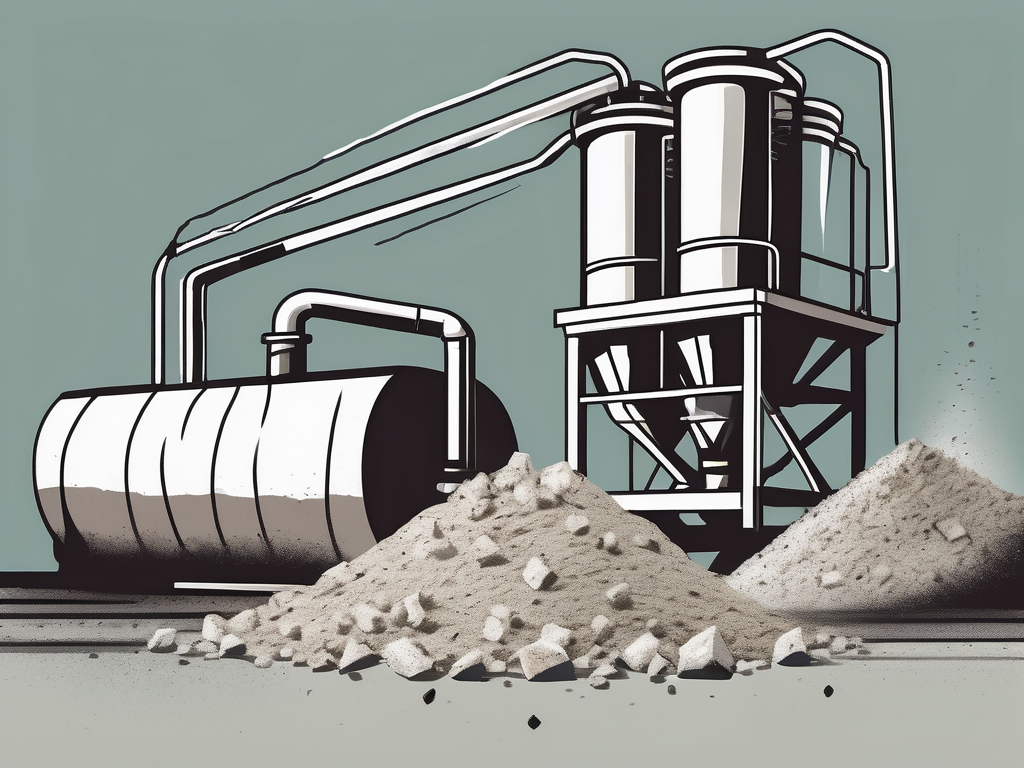Crushed Concrete Drainage
Published on: March 21, 2024
Get an estimate for your project in 60 seconds

Crushed concrete is a versatile material that plays a crucial role in many construction and landscaping projects. One of its most common uses is in drainage systems, where it provides an effective and economical solution. In this context, we will explore the benefits, uses, and installation process of crushed concrete for drainage purposes.
Understanding Crushed Concrete
Crushed concrete, also known as recycled concrete aggregate, is a construction material that is produced from demolished concrete structures. The process involves crushing the concrete into smaller pieces, which can then be used in a variety of construction projects. The use of crushed concrete is a sustainable practice, as it reduces the need for new materials and minimizes waste.
One of the leading suppliers of crushed concrete is Hello Gravel. They offer a range of crushed concrete products suitable for various applications, including drainage systems.
Benefits of Crushed Concrete for Drainage
Crushed concrete is an excellent material for drainage systems for several reasons. Firstly, its irregular shape and size allow for excellent water flow, reducing the risk of blockages. Additionally, crushed concrete is a cost-effective option compared to other materials such as gravel or crushed stone.
Moreover, crushed concrete is a sustainable choice. By using recycled materials, you are contributing to the reduction of waste and the conservation of natural resources. This not only benefits the environment but also aligns with the growing trend of green building practices.
Using Crushed Concrete for Drainage
Crushed concrete can be used in various types of drainage systems. It is commonly used in French drains, septic systems, and road-side edge drains. The material’s versatility and durability make it a popular choice for these applications.
When selecting crushed concrete for your drainage project, it’s important to choose the right size. The size of the crushed concrete should correspond with the size of the drainage system. For larger systems, larger pieces of crushed concrete are recommended, while smaller systems will require smaller pieces.
French Drains
French drains are a popular type of drainage system that uses crushed concrete. These drains are typically used to redirect surface water away from a building’s foundation. The crushed concrete allows water to flow freely through the drain, preventing water buildup and potential damage to the foundation.
Installing a French drain with crushed concrete is a straightforward process. It involves digging a trench, lining it with a permeable fabric, filling it with crushed concrete, and then covering it with soil. This creates a hidden drainage system that effectively manages water flow.
Septic Systems
Crushed concrete is also used in septic systems. It serves as a bed for the septic tank and as a fill material for the drain field. The crushed concrete allows for proper drainage and prevents the system from becoming waterlogged.
When using crushed concrete in a septic system, it’s important to ensure that the material is properly cleaned and free of any contaminants. This ensures the longevity and effectiveness of the system.
Installing Crushed Concrete for Drainage
The installation process for crushed concrete in a drainage system is relatively simple. However, it’s important to follow the correct steps to ensure the effectiveness of the system.
Firstly, you need to excavate the area where the drainage system will be installed. This involves digging a trench or hole to the required depth. Once the area is prepared, you can begin to add the crushed concrete.
Adding the Crushed Concrete
When adding the crushed concrete, it’s important to do so in layers. This allows for better compaction and stability. Each layer should be compacted before the next is added. This can be done using a plate compactor or a heavy roller.
Once the crushed concrete is compacted, you can add the drainage pipe or other components of the system. The crushed concrete should surround these components, providing stability and allowing for proper drainage.
Finishing the Installation
After the crushed concrete and drainage components are installed, the area can be backfilled with soil. This should be done carefully to avoid damaging the system. Once the area is backfilled, it can be landscaped as desired.
For larger projects or if you’re unsure about the installation process, it’s recommended to hire a professional. Companies like Hello Gravel can provide expert advice and services to ensure the success of your project.
Conclusion
Crushed concrete is an excellent material for drainage systems. Its versatility, durability, and cost-effectiveness make it a popular choice for many construction and landscaping projects. Whether you’re installing a French drain, a septic system, or a roadside edge drain, crushed concrete can provide an effective and sustainable solution.
By understanding the benefits and uses of crushed concrete, as well as the installation process, you can make informed decisions for your drainage projects. Remember, for the best results, consider sourcing your crushed concrete from reputable suppliers like Hello Gravel.
Get Your High-Quality Crushed Concrete Now
Ready to enhance your drainage system with top-tier crushed concrete? Look no further than Hello Gravel, your nationwide provider of premium aggregates. Experience our white glove service and let us handle the heavy lifting. Simply visit our website to request a quote or place your order, and we’ll deliver directly to your site, whether it’s a small driveway project or a large civil construction endeavor. Don’t settle for less—check out our products today and let us supply you with the highest quality materials for your project needs.
Author: alan